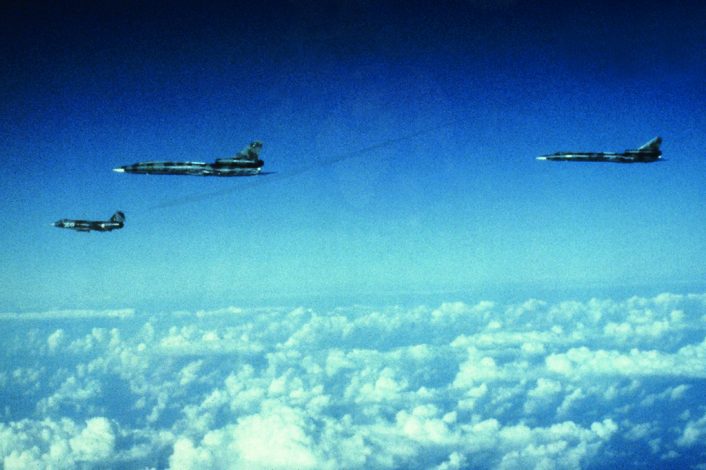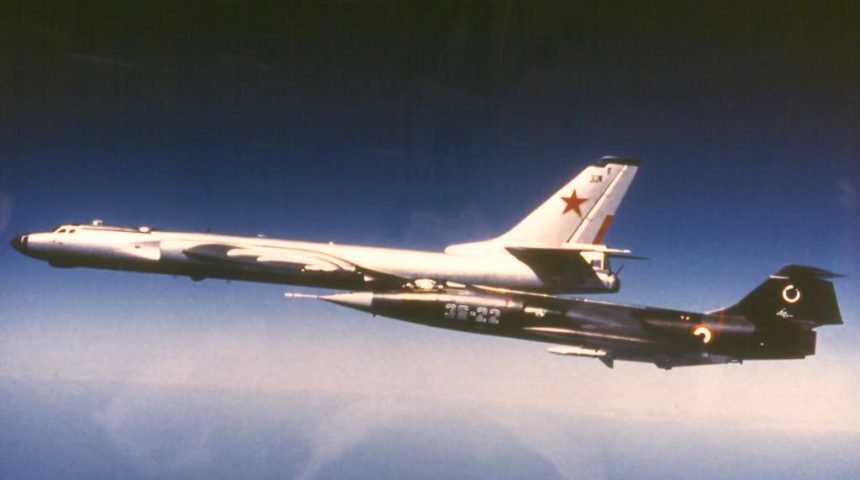Fascinating stories and photographs from another era.
As many of you will remember, last week we published an interesting story that included rare photographs of NATO fighter jets taken from Soviet bombers and maritime patrol aircraft intercepted during the Cold War. Although of poor quality, because they were manly taken in 1970s with the analogue cameras, the shots show the close encounters between Tu-95RT over-the-horizon targeting platforms and U.S. Navy F-4 Phantoms, F-14 Tomcats and also P-3s, USAF F-4s based in Iceland, RAF Phantom GR.1s, and also RNoAF (Royal Norwegian Air Force) F-104 Starfighter.
The success the article had among our readers and the subsequent discussions on social media brought to my mind some other interesting photographs I obtained years ago while preparing an article fo Air Forces Monthly and Aeronautica & Difesa, images depicting Italian Air Force F-104s flying along side Soviet or Libyan aircraft in the Adriatic, Ionian or Tyrrhenian Sea.
Once again, the quality is not even comparable to the digital shots taken nowadays since the majority of these photographs were taken with hand-held cameras, whose films were developed then copied many times for release. However, they are extremely interesting, because, as a sort-of time machine, they give us a glimpse at the types, color schemes, markings used by the jets in that period.
During the Cold War, Libyan MiGs and the Tupolev aircraft, along with Soviet bombers, maritime patrol, surveillance and reconnaissace, as well as transport aircraft wearing the red star, regularly transited through the Otranto Channel (the waters of the Southern Adriatic Sea in front of Albania) causing the frequent Alpha Scrambles (Alert Scrambles) of the F-104S Starfighter aircraft of the Aeronautica Militare (Italian Air Force) in QRA (Quick Reaction Alert) service.

The Italian fighter squadrons that in those years were tasked with the QRA service were mainly two: the 12° Gruppo (Squadron) of the 36° Stormo (Wing) at Gioia del Colle Air Base and the 10° Gruppo of the 9° Stormo at Grazzanise. Equipped with an average of 12 aircraft, both could count on the contribution of the alarm cells provided by the squadrons in the northern part of Italy: these rotated at Sigonella and Trapani Birgi, before the latter became the permanent base for the NODA, Nucleo Operativo Difesa Aerea (Air Defence Operative Group), and then the 37° Stormo (still based there and equipped with the Eurofighter Typhoon).
For my story I published in 2001 on Air Forces Monthly magazine, I had the opportunity to speak to Col. Agrusti who in 1987, as second lieutenant, joined the the 12th Gruppo as an F-104 pilot. Here’s what he recalled to me:
“I arrived at Gioia from the 20th Gruppo of Grosseto in February 1987. At the time, the Gruppo at that time flew with F104s in the S modified version the one able to the launch of the AIM-7 Sparrow missile. The pilots were distributed between the 73rd, 89th and 90th Squadriglia (Flight). The newly assigned achieved the LCR, Limited Combat Readiness after 96 flight hours and then the FCR, Full Combat Readiness (the full combat capability), following 120 flight hours on the aircraft.”
That part of the training, up to the achievement of the FCR, was important to put the pilot’s ability to take off within 5 minutes from the alert scramble order.
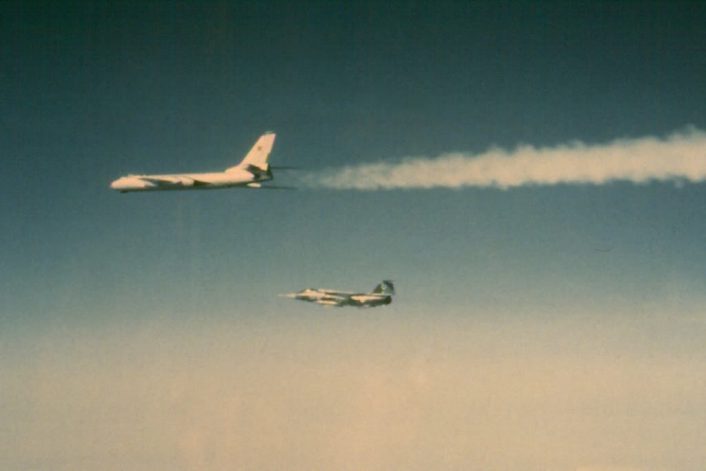
“In the Squadron, besides training pilots, there was also an alert team. The simulated Scrambles, that were more common than the real ones, were kicked off by the sound of a simulated siren (as opposed to the “real” siren sound that was continuous). In 1987, the squadron shared the emergency shifts with Grazzanise. We were tasked alternate days with the 10th Gruppo: for example, they did even days, we did the odd days. The alert cell had to guarantee a pair of aircraft ready for take off in five minutes and a pair set aside that had 25 minutes to be ready to take off in five minutes, hence the “ready in 30” status. Similarly, the stand-by Squadron had to prepare two aircraft capable of taking off in two hours from the order. Practically, we were on call every day, because even on days that we were on stand-by, we had to guarantee readiness .”
Every alert cell was made up of two aircraft, two pilots (leader and wingman), four specialists, two weapon crews and one driver. The equipment was placed in an alert building, a separate building with a small conference floor, tables and TV and obviously bedrooms. There were three of these: one for the armament crews and driver, one for the crew chiefs and one for the pilots.
In the pilot’s room, there were two telephones, one for internal communication, and one for direct access to the COC, Combat Operation Center.
The COC had a key role in the economy of the intercepting group that had to:
- When possible, give warning of the Scramble;
- Accurately provide meteorological variations on the base;
- Give information on the status of the NAVAIDS (radioaids to navigation), runway, light, barriers;
- Notify on eventual variations of emergency conditions;
- Update on the weather at the alternate airfields.
“At the sound of the siren, everything had follow a routine in which nothing was left to chance, otherwise, being able to take off within the “five minutes” is truly an impossible mission. I have seen training pilots take off after ten minutes because one of the routine steps was missed during a Scramble!”.
After leaving the alert building, the pilots would run towards the aircraft shelters. Usually, the F-104s were in the shelters next to the Gruppo, so they rarely had to use a van, and the closest fighter between the two would give the right of way to the leader.
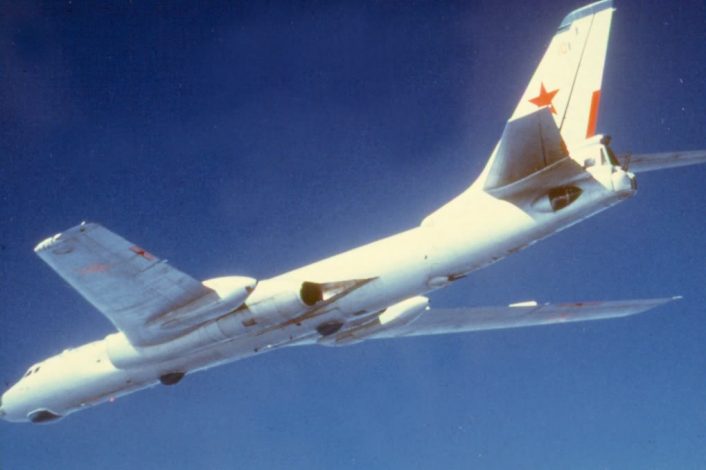
“The aircraft in the shelters had already been checked and positioned in such a way that all idle flight gear would be in the correct position. After carrying out the “five fingers” in the morning at the beginning of the shift, (using the five fingers of the hand, the chief crew carries out a series of visual controls) I would position the SECUMAR on the ladder, the skull cap placed on top of the cockpit, and gloves, one on the right and one on the left.”
Since in the case of take off there would not be enough time to carry out many checks, the morning inspection would also include a radar and equipment check, particularly the AIM-7 or Aspide, that consisted of “lock-on tests” carried out to various positions of the throttle. The generator would also be turned on to 28V so as to warm up the LN3 platform.
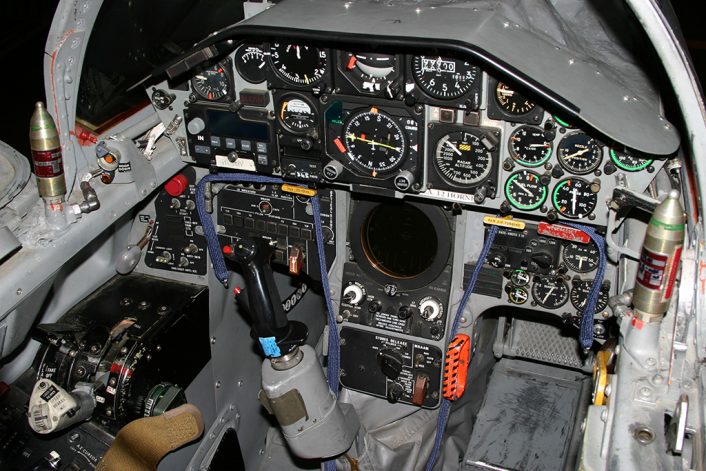
The main rule of the Scramble was DON’T HARM YOURSELF, therefore it was important to be well-timed without compromising your own and other’s safety.
As soon as entering the cockpit the “starter was given”, the helmet was worn and the mask was put on, we would strap on the Martin Baker and we would make sure the specialists had already pumped air into the compressor. We immediately carried on a radio check which was to be on the UHF Squadron frequency and we then contacted the Control Tower so as to be given priority take off. With a little increase in thrust, essential for overcoming the inertia of the aircraft, we began taxing while checks took place.
We always took off from runway 14R, which was not the closest to the shelters. This was because 14L, which had to be crossed to reach the 14R, was not used as it was not equipped with Bliss Black barrier.
Timing of the take off was calculated from the sound of the siren to the time that the aircraft released its breaks to start take off roll. The rule was that the first aircraft to arrive at the runway, would take off first, regardless to whether it was the leader or wingman: what mattered was the results of the team. Immediately after take off, the Approach was contacted via radio, followed by the GCI, the (Guida Caccia, Ground Controlled Interception) fighter controller, on a “taboo” frequency, recognized by the crew. If the mission was for ID (Identification), the target was reached in the least amount of time possible. The leader went into “shadowing”, hence, followed the intruder to determine its altitude, its speed, its heading, type of aircraft, its nationality and its serial, to then communicate it to the CRC.
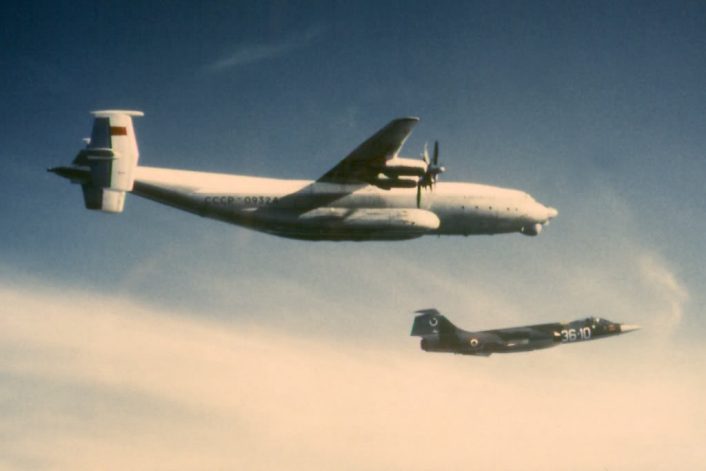
“It was very hard to read the serial number of a Soviet Bear in flight at 45,000 ft. at 0.5 Mach. In such cases, it was extremely important to maintain the aircraft nose up, at low speed and with the shaker operating (it’s a method that makes the control stick vibrate to warn the pilot of the impending pre-stall, and followed by the kicker, which automatically pushes the bar so as to avoid stalling). At night time, although all these aircraft had all their lights on, (otherwise, it would have seemed as a clear act of hostility which would have been responded with fire) being able to copy the serial number of the zombie was really very complicated”.
Most of the time, the CRC required a photograph of the intruder so for this reason, pilots took with them a photographic camera in their left pocket of their flight suit, at leg level so that if one of them were to abort the mission for technical reasons, the other one could bring back an image for the Intelligence Officer. It was placed in the left pocket because the right hand could never be removed from the stick.
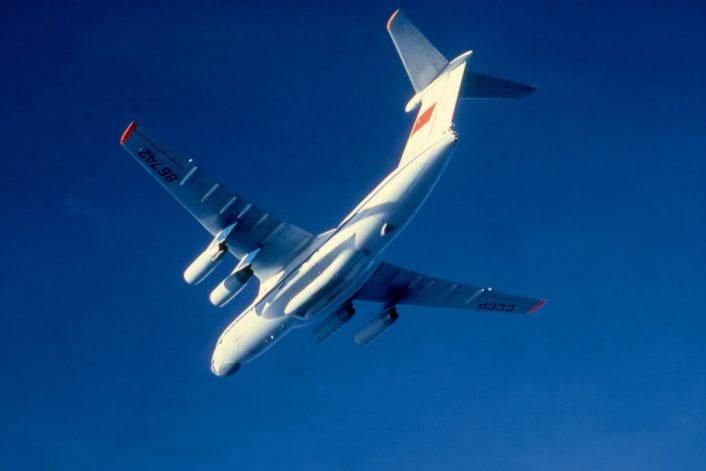
“At the time, there were lots of comings and goings of Russian made aircraft of all types that crossed the Otranto Channel to identify the aircraft by request of the SOC that consistently revealed to be “May”, “Candid”, “Blinder”, or even “Bear”. Once, a Tu-16 “Badger” tried to frighten me by turning its tail machine gunner towards me and took a photograph, but, this type of jokes, although rather common, were not considered hostile acts and did not require an armed response. These encounters were full of pressure, but they were carried out with extreme respect from both sides.”
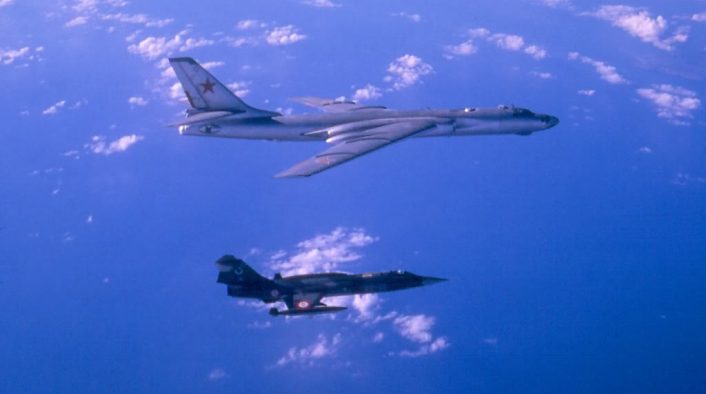
In this post you can find some photographs of Soviet and Libyan aircraft intercepted by the Italian Air Force in 1980s. Among them, there are some of Libyan Tu-22s, taken by the 12° Gruppo on Sept. 20, 1983 (and later released by the 5° Reparto of the Italian Air Force Staff) and show some Tu-22B Blinders flying next to the Italian airspace off Otranto. The Libyan Blinders (whose exact number is not clear with data reporting from 7 to 18 planes) were supersonic bombers based at Okba Ben Nafi Air Base (currently Mitiga, prior to June 1970, known as Wheelus Air Base and used by the USAF) that were used in combat against Tanzania in 1979 and Chad in the ’80s, during the Chadian-Libyan conflict. Air-to-air photographs of Libyan Tu-22s are quite rare.
